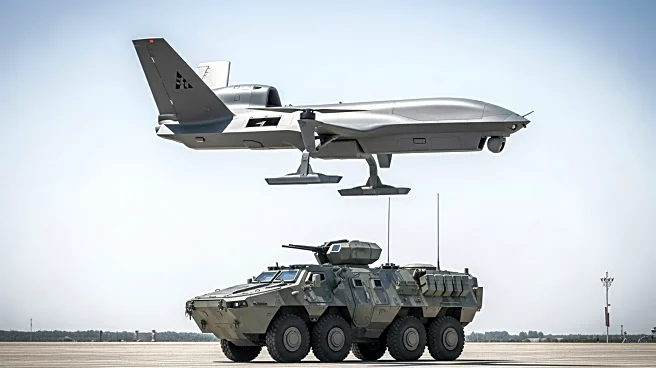What's Happening?
China showcased its growing military prowess during a parade in Beijing, marking the 80th anniversary of the end of World War II. The event featured advanced hypersonic missiles, intercontinental ballistic missiles (ICBMs), and drone systems, highlighting China's global strike capabilities. Notable systems included the JL-1 air-launched missile, JL-3 submarine-launched missile, DF-61 land-based ICBM, and DF-31BJ missile. The parade also introduced the AJX-002 submarine drone, GJ-11 stealth attack drone, and CS-5000T stealth drone. The HQ-19 missile defense interceptor, capable of targeting low Earth orbit objects, was also displayed, reflecting China's strategic military advancements.
Why It's Important?
China's military parade serves as a demonstration of its enhanced capabilities, potentially altering global military balances. The display of advanced weaponry, including systems capable of delivering nuclear payloads, signals China's intent to assert its military presence on the world stage. This development may prompt strategic recalibrations by other nations, particularly the U.S., as they assess potential threats and adjust defense policies. The parade underscores China's commitment to maintaining a robust defense posture amid global uncertainties.
Beyond the Headlines
The parade's emphasis on military strength raises questions about China's long-term strategic goals and its impact on international relations. The display of space-related capabilities, such as the HQ-19 interceptor, highlights China's interest in space dominance, which could lead to increased competition in space exploration and defense. The event also reflects China's narrative of peaceful development, juxtaposed with its military advancements, posing ethical considerations regarding global peace and security.














